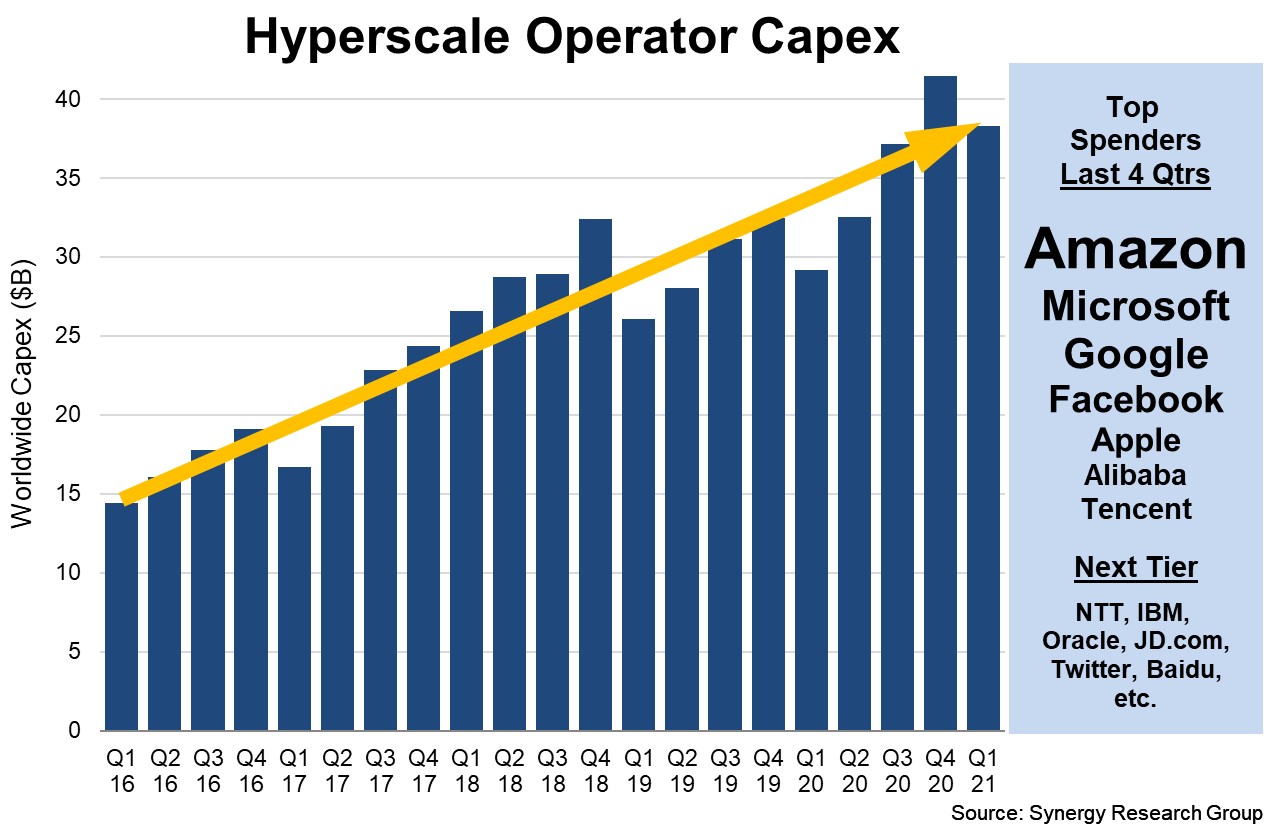Oracle has vowed to "roughly double" its capital expenditure (capex) on cloud infrastructure in its fiscal 2022 to $4 billion, as the company reported robust earnings for its 2021 Q4, reported June 15.
The announcement by Oracle CEO Safra Katz on an earnings call late Tuesday came as Oracle reported quarterly revenues of $11.2 billion (up 8% on-year) and GAAP net income $4 billion; up 29%.
CEO Katz said: "We will roughly double our cloud capex spend in FY 2022 to nearly $4 billion. We are confident that the increased return in the cloud business more than justifies this increased investment... We also see cloud as being fundamentally a more profitable business compared to on-premise" she added on the earnings call.
The company's earnings revealed particularly strong performance across its applications portfolio: Oracle's strategic back-office cloud applications now have an annualised revenue of $4.4 billion and grew 32% in constant currency for the quarter, with its Fusion ERP offering growing 42%. NetSuite ERP up 22%, and Fusion HCM up 30%.
As Larry Ellison was keen to emphasise (along with the customary dig at rival SAP -- "never rewrote their ERP system for the cloud") Oracle's own back-office cloud application revenue is "not only bigger than our nearest competitor but also growing more than twice as fast."

See also: Google to allow BYO encryption keys in Workspaces, adds overdue admin tools to Meet.
Capex of $4 billion is big news for Oracle. Less so for the hyperscalers. Oracle's $1.85 billion 12-month capex spend is what Amazon spent in a week on capex in the last quarter of 2020, Charles Fitzgerald, a former Microsoft general manager noted on his blog Platformonomics in March 2021. (Oracle doesn't run fulfilment warehouses: it's still a big gap to fill...)
Hyperscale operator capex in the first three months of calendar 2021 hit $38 billion meanwhile , up 31% year over year, according to June data from Synergy Research Group. As Synergy noted: "Much of the hyperscale capex goes towards building, expanding and equipping huge data centers... The data center share of capex varies greatly quarter by quarter and from one operator to another, but on average data center spending accounts for well over half of all hyperscale operator capex."
Synergy now counts 625 hyperscale data centres globally.
Read this: Companies could save billions by ditching ‘Hotel California’ cloud for own infrastructure: VC
“For hyperscale operators the pandemic proved to be more of a stimulus to growth rather than a barrier. Over the last four quarters we continued to see extremely strong growth in revenue, capex and data center spending,” noted John Dinsdale, Chief Analyst at Synergy Research Group on June 3.
He added: “It is interesting to compare their fortunes with other types of major service provider around the world. As hyperscale capex levels keep on setting new records, it is in stark contrast with telcos whose capex has essentially been totally flat for five years now, mirroring their inability to grow overall revenues. Given the ongoing growth in service revenues for hyperscalers and the ever-increasing need for a larger global data center footprint, we are forecasting continued double-digit growth in hyperscale capex for several years to come.”
Oracle CTO Larry Ellison suggested that industry-specific applications and workloads were a growing focus, including for manufacturing and automotive customers. As he put it: "We're very, very good at running simulation software. A large number of car companies have moved all of their PaaS simulations to the Oracle Cloud because we do it faster and cheaper than any other cloud. So we have actually a pretty balanced portfolio right now where we have the Oracle database contributing to half of the workloads, running on -- running in OCI, and the other half is a variety of new customers, doing new applications not database-related. "









